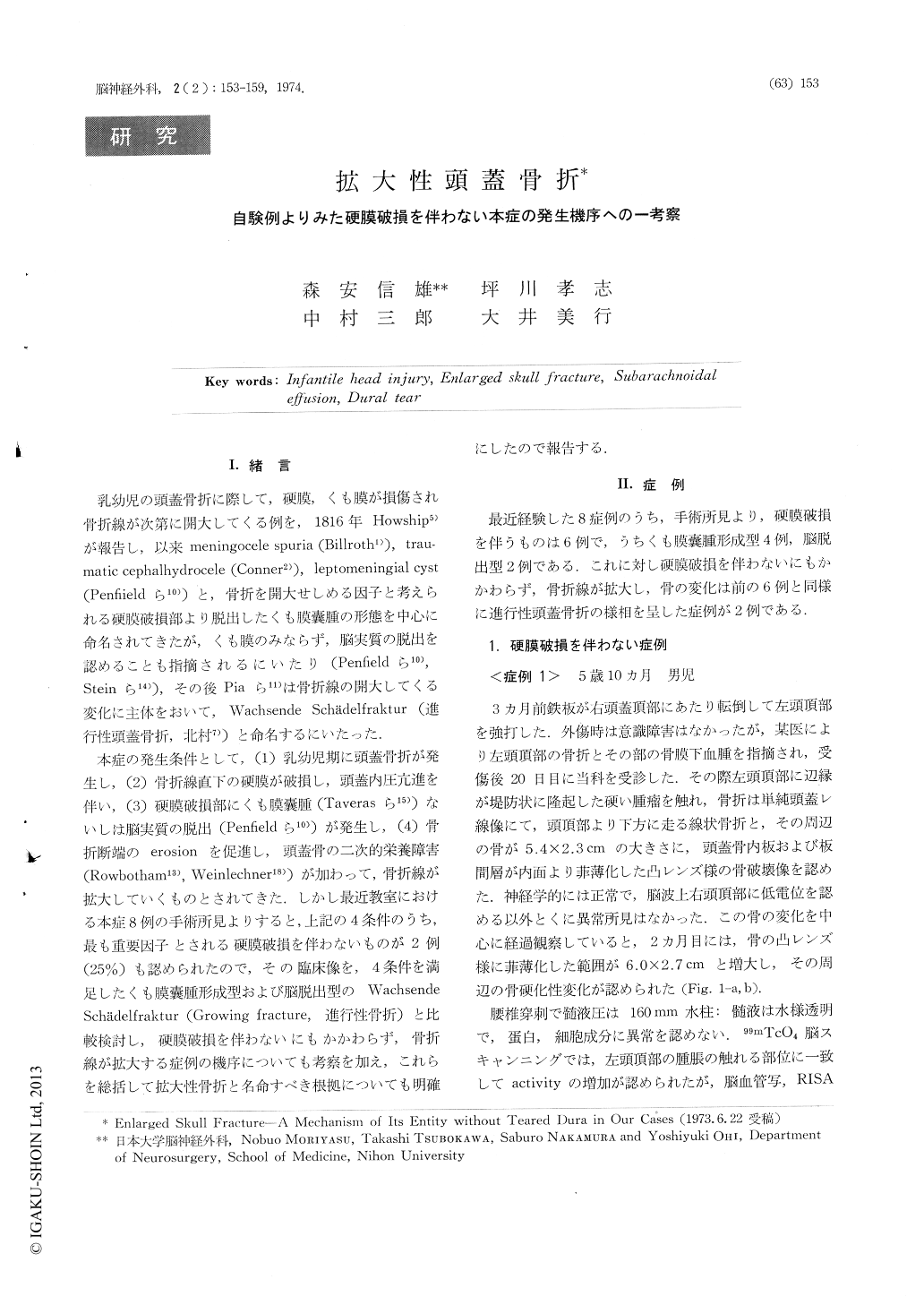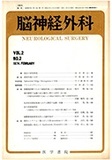Japanese
English
- 有料閲覧
- Abstract 文献概要
- 1ページ目 Look Inside
Ⅰ.緒言
乳幼児の頭蓋骨折に際して,硬膜,くも膜が損傷され骨折線が次第に開大してくる例を,1816年Howship5)が報告し,以来meningocele spuria(Billroth1)),traumatic cephalhydrocele(Conner2)),leptomeningial cyst (Penfiieldら10))と,骨折を開大せしめる因子と考えられる硬膜破損部より脱出したくも膜嚢腫の形態を中心に命名されてきたが,くも膜のみならず,脳実質の脱出を認めることも指摘されるにいたり(Penfieldら10),Steinら14)),その後Piaら11)は骨折線の開大してくる変化に主体をおいて,Wachsende Schadelfraktur(進行性頭蓋骨折,北村7))と命名するにいたった.
本症の発生条件として,(1)乳幼児期に頭蓋骨折が発生し,(2)骨折線直下の硬膜が破損し,頭蓋内圧亢進を伴い,(3)硬膜破損部にくも膜嚢腫(Taverasら15))ないしは脳実質の脱出(Penfieldら10))が発生し,(4)骨折断端のerosionを促進し,頭蓋骨の二次的栄養障害(Rowbotham13),Weinlechner18))が加わって,骨折線が拡大していくものとされてきた.
According to the clinical analysis in our eight cases of enlarging skull fractures, two cases had not any dural tear, formation of arachnoid cyst and cerebral herniation, but had small scar of epidural hematoma and subarachnoid effusion under the fracture. In another six cases, each skull fracture was enlarged by arachnoid cyst or cerebral herniation through the teared dura; four cases whose dural tear lead to the formation of arachnoid cyst, and two cases lead to cerebral herniation and perpetuation of cerebral involvement.

Copyright © 1974, Igaku-Shoin Ltd. All rights reserved.


